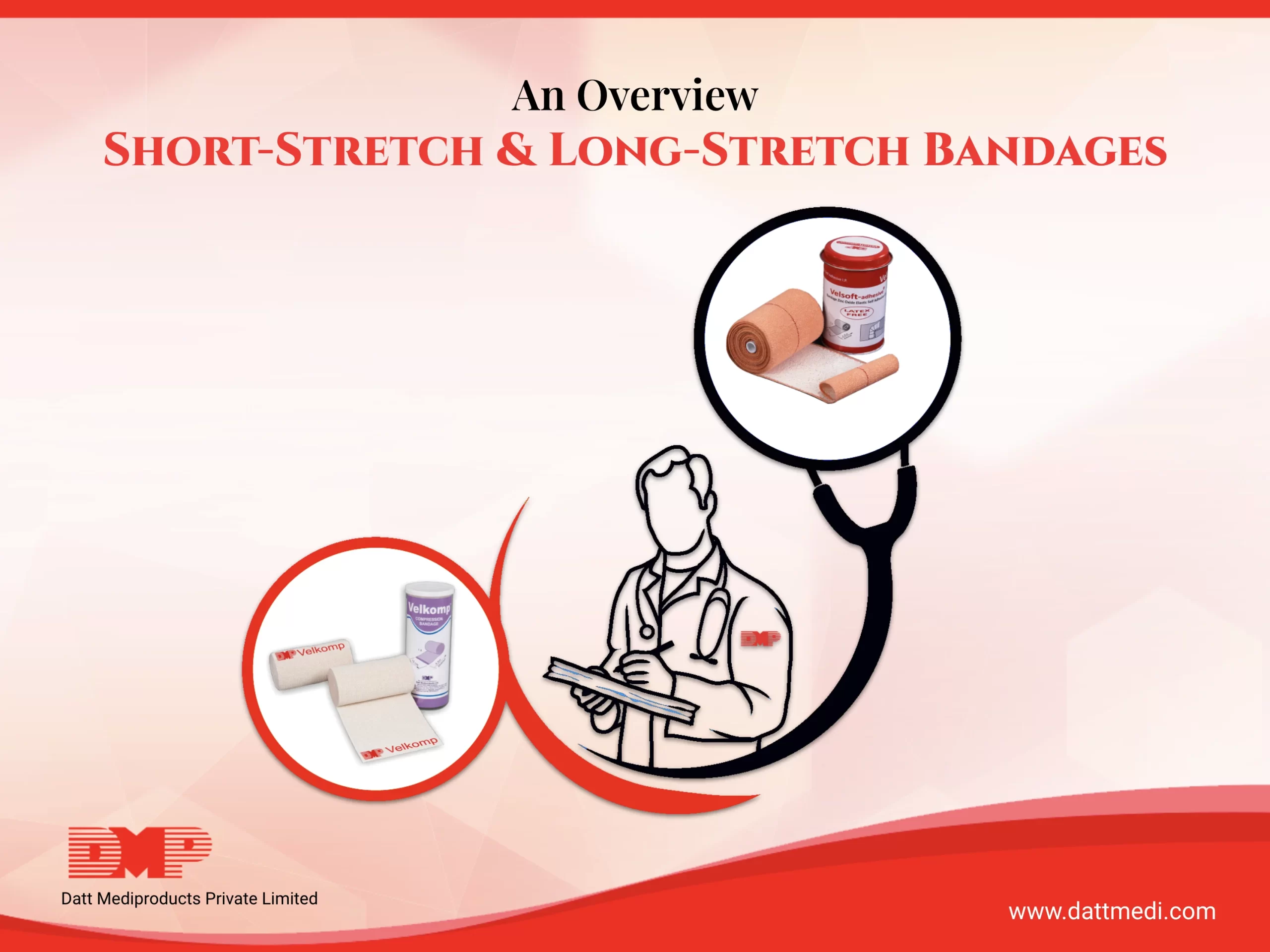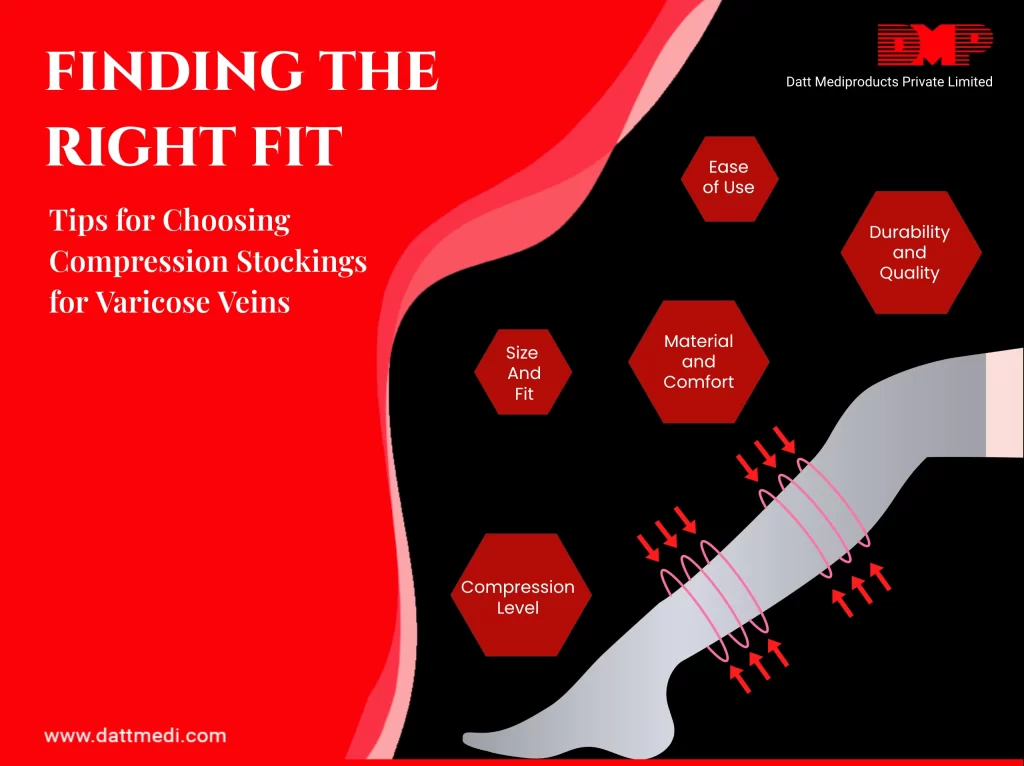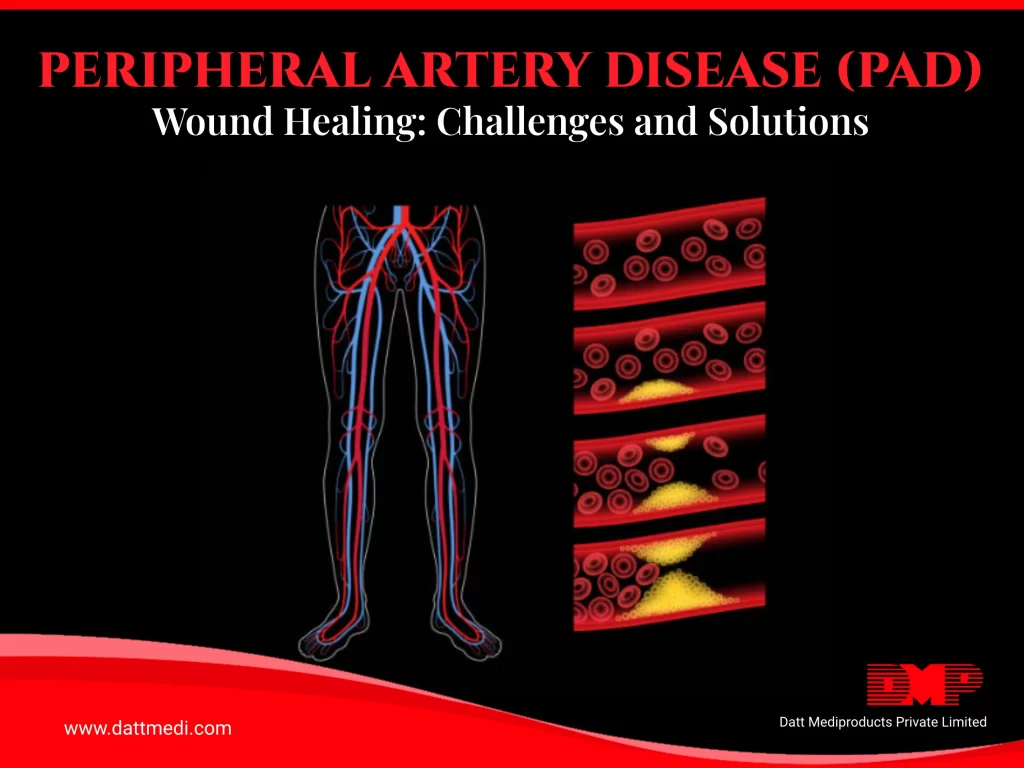
We all are aware that wound healing is more complicated than just wound assessment and treatment. To select the most appropriate bandaging system, one must understand the concepts of extensibility, recoil, and working and resting pressures.
Till date, little research has been done to investigate the best combinations of bandages or different bandage application techniques. We totally rely on clinical experience and tradition.
So, we thought to share some details to help you understand bandaging principles and to effectively treat and heal wounds.
- Extensibility: is stretchability, the maximum amount a bandage can stretch. So for example, if a 3-meter bandage has 100% extensibility it would stretch up to a maximum length of 6 meters.
- Recoil: is to regain. Once you stretch a bandage and release the stretch, it should come back to it’s original length. You can tell the quality of the bandage by its recoil, all good quality bandages will go back to its original length.
- Working pressure: The bandage pressure on the limb when the limb is in an active state; for example standing, walking, etc.
- Resting pressure: The bandage pressure on the limb when it is in an inactive/ resting state; for example lying down or sitting down.
Some of the benefits bandages provide:
- Reduce swelling by applying Intense therapy sessions.
- Long-term use when certain individuals cannot wear compression garments.
- Helps to control swelling symptoms in patients with complex medical issues.
The compression bandages are mainly of two distinct types – the long stretch and the short stretch ones.
Long-stretch also known as Elastic bandages
Long stretch bandages contain elastic yarn which allows them to stretch more than 100% of the initial original length. They can be applied smoothly and will conform according to the contour of the body.
Short-stretch also known as Low-elasticity bandages
The short stretch bandages, however, are composed of cotton fibers. These fibers are interwoven so that the original length can be extended by almost 60% at the time of usage. The main advantage of the short stretch bandages is that they provide high working pressure that is necessary for lymphatic drainage as well as venous flow.
Extensibility: Short-stretch vs. Long-stretch bandages
Short stretch bandages are made out of 100% breathable cotton. Because of the way they are woven it causes interlocking of the fibers and results in a higher compression. Thus they are more effective for a higher working pressure. Being reusable and easily washable they end up being quite economical for people suffering from venous edema, lymphedema, post-traumatic swelling, etc. Most commonly short stretch bandages are used for vascular insufficiency, as it acts like a calf muscle to pump blood/ lymph towards the heart.
Long-stretch bandages have fibers which stretch as edema increases. They have high extensibility and recoil. Most commonly long stretch bandages are used to treat sprained areas of the body. They are often used to provide support and relief to tendons, ligaments, and muscles. Depending on the grade of bandage that is used, elastic systems may need to be taken off at night since the pressure that they exert is difficult to tolerate when sleeping.
Consultation with your Doctor
Doctors will help guide you in choosing the most appropriate bandage for your condition and also make sure that the bandaging is done using the correct technique. He/She will also guide you on how to take proper care of your bandages.
Before starting any type of compression therapy, Datt Mediproducts recommends to consult with a doctor or undergo a comprehensive clinical assessment. Compression therapy is contraindicated in individuals with certain diseases and conditions, so it’s best to check that you don’t fall into any of these categories before you start bandaging. To know more about these bandages, visit us @ www.dattmedi.com
Stay Safe! Stay Healthy!





